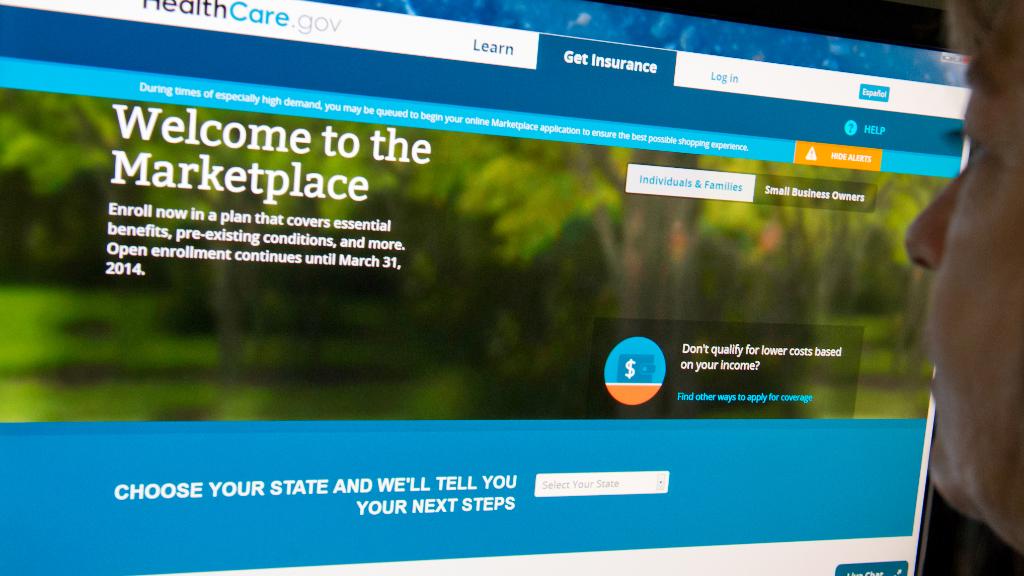
Open enrollment for Obamacare 2018 starts Wednesday.
Some things will stay the same. Consumers can still sign up on the federal exchange, healthcare.gov, or their state marketplaces. They can still get subsidies to help lower their premiums or reduce their deductibles and co-pays, if they qualify. And, they can still shop and compare coverage options, which is especially important this time around.
But there's a whole lot that will be different under the Trump administration, which has vowed to dismantle the health reform law. Some plans will be much more expensive, while others a lot less so. There will be less enrollment help available from some non-profit groups, but it may be easier to get advice from brokers. And the sign-up period will be a lot shorter.
These changes -- combined with President Trump's repeated declarations that Obamacare is dead -- could mean a lot fewer people will enroll for 2018. Some experts estimate that sign ups could fall by 1 or 2 million from the 12.2 million who initially picked plans this year.
Only 40% of current Obamacare enrollees and 15% of the uninsured know that enrollment begins on Wednesday, according to the latest Kaiser Health Tracking Poll.
Here are five changes coming to Obamacare open enrollment for 2018:
Silver plans are pricier. Premiums for the benchmark silver Obamacare plan will soar 37%, on average, in 2018, according to federal data.
But how much consumers will pay depends a lot on where they live. In Alaska, for instance, the price of the benchmark silver plan will drop by 22%, on average, because the state created a reinsurance plan that protects carriers from footing the entire bill for enrollees with high medical bills. But in Iowa, where only one insurer will remain on the exchange, premiums for the benchmark plan are skyrocketing 88%.
Related: Premiums for popular Obamacare plans to soar 37% for 2018
It will also depend on which policy they pick. The lowest cost silver plan, for instance, is only rising 17% in price, on average, according to federal data.
Many insurers jacked up the rates of their silver plans in part to make up for President Trump ending federal support for Obamacare's cost-sharing subsidies. These subsidies reduce deductibles and co-pays for lower-income enrollees.
Most consumers, however, will be shielded from the rate hikes. That's because they get premium subsidies that limit their monthly cost to less than 10% of their household income.
Gold policies are more affordable for some. Premium subsidies are also soaring since they are pegged to the price of the benchmark silver plan.
But the average premium for the lowest cost gold plan is rising only 19%. That means the cheapest gold policy will have lower rates than the least expensive silver plan in 459 counties next year once subsidies are factored in, according to a Kaiser Family Foundation analysis.
The gold plans may be much more attractive to enrollees since they come with an average deductible of $1,320, compared to just over $4,000 for a silver policy, according to Health Pocket, an online health insurance shopping tool.
Related: Trump's quest to kill Obamacare hurts the middle class
Other policies may also be more affordable next year. Some 80% of enrollees will be able to find a plan for $75 a month or less -- up from 71% this year and the highest share so far.
Many more consumers will be able to obtain coverage without paying anything. For instance, a 48-year-old consumer earning roughly $30,000 can find a zero-premium bronze policy in nearly 1,050 counties next year, up from 132 counties in 2017, according to an analysis by Oliver Wyman consulting group.
There's a new expanded bronze plan. Earlier this year, the Trump administration authorized insurers to sell bronze plans that pick up less of enrollees' health care costs, on average. These "expanded bronze" policies should have lower premiums, but higher out-of-pocket costs.
Also, consumers will have the option to buy a bronze high-deductible plan with a health savings account in the states on the federal exchange.
Enrollees can skip healthcare.gov. Consumers will now be able to enroll directly through certain third-party websites, rather than having to go to the federal exchange's site to complete their applications.
Also, healthcare.gov will make it easier for consumers to connect with agents and brokers for assistance with applications through a new "Help on Demand" service.
Related: Trump administration is making it even harder to sign up for Obamacare
The Trump administration says this will provide Americans with more ways to enroll. Critics, however, worry that applicants may be steered to certain insurers' products and may not be told of less-expensive options.
The enrollment period is shorter. Perhaps the biggest change is that consumers will have only half the time to sign up for 2018 coverage. Open enrollment on the federal exchange runs only through Dec. 15, instead of through the end of January, as in some prior years.
Some states that run their own exchanges, however, are extending the sign-up period. California and New York residents, for instance, will be able to enroll through Jan. 31, while Washington consumers will have until Jan. 15.
Related: Most Obamacare enrollees could pay less for policies next year
The shorter enrollment period makes it particularly important for current consumers to shop and compare the plans available to them. That's because those who don't actively select a plan by Dec. 15 will be automatically re-enrolled in their current plan, or a similar one if it's been discontinued. However, unlike in prior years, participants in many states won't be able to switch to another policy after that date since the enrollment period will be over.
This is a big deal because some policies will be far costlier next year. Consumers may get stuck if they don't shop around.
Most consumers aren't aware of the shorter enrollment period. Only 25% of enrollees and 5% of the uninsured knew when it ends, the Kaiser poll found.


